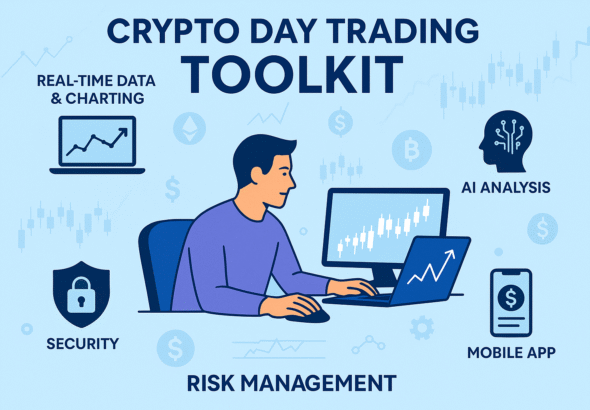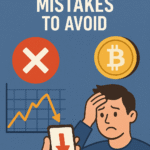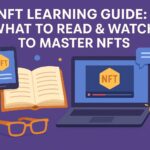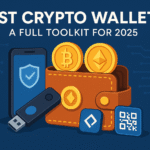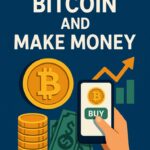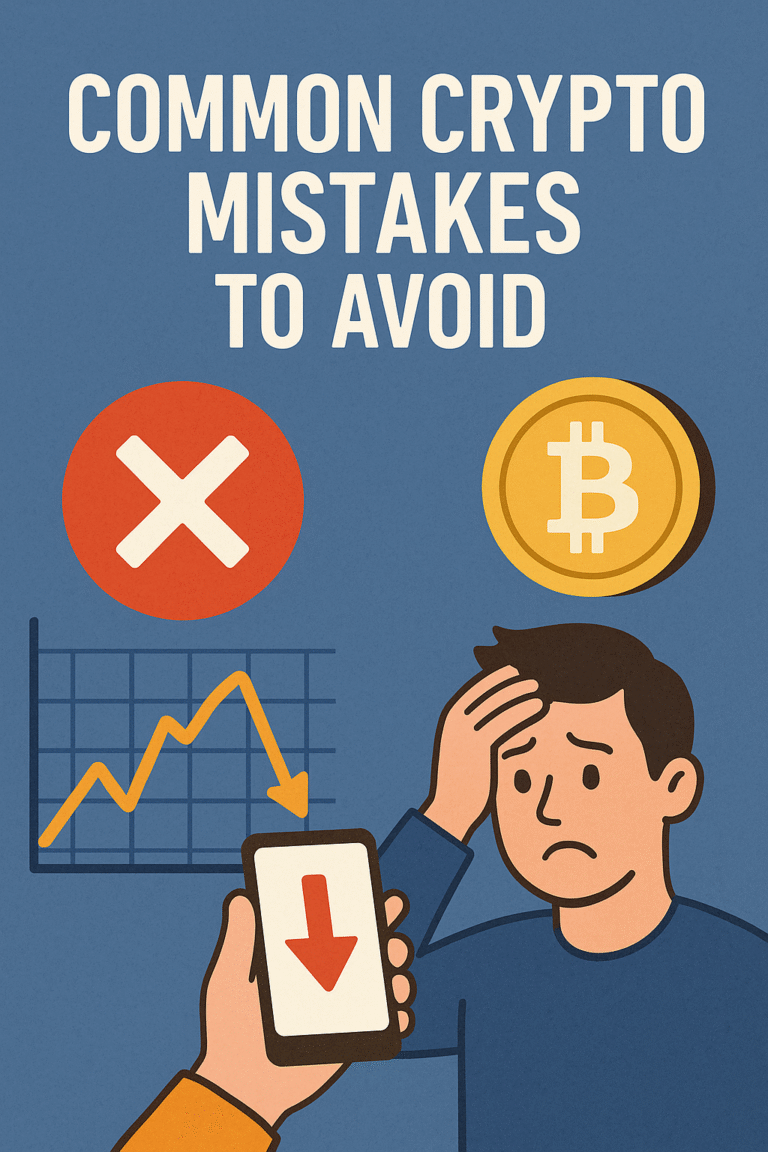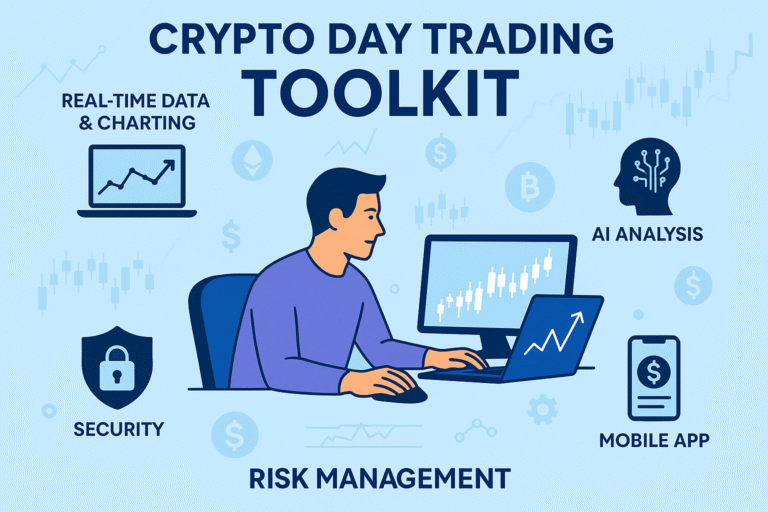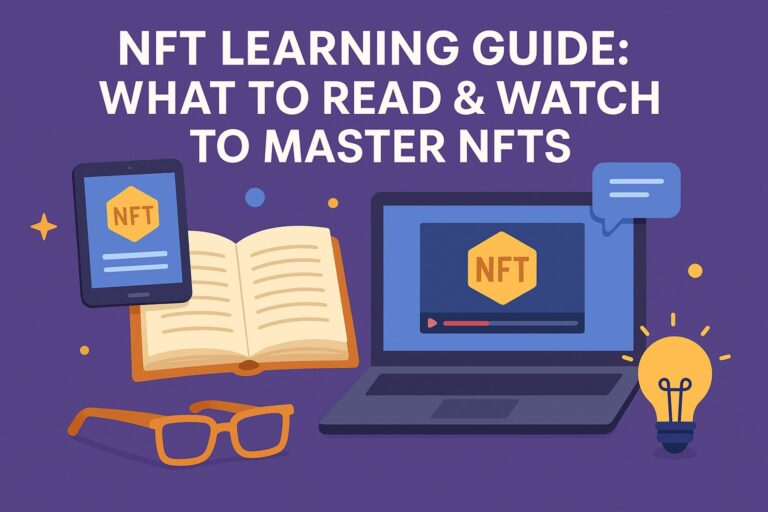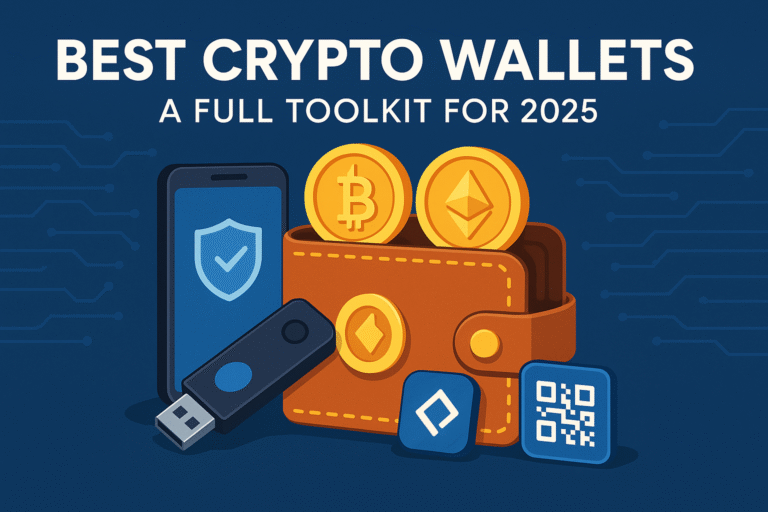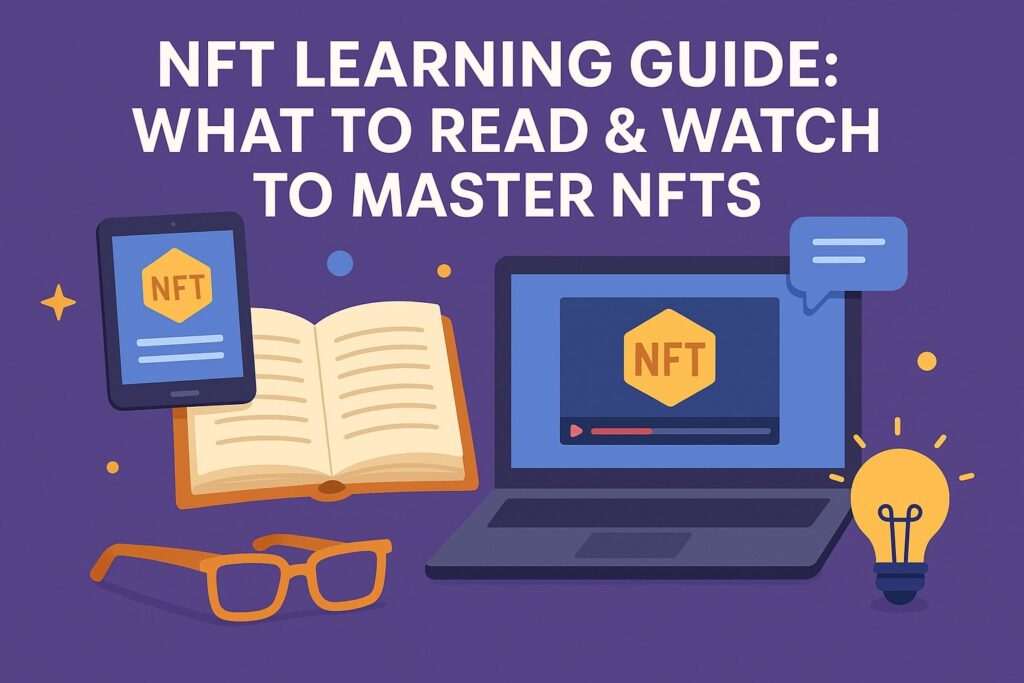
Introduction: Why Learn NFTs Now?
NFTs (non-fungible tokens) are more than just digital art or overpriced jpegs. They represent ownership, access, and identity in the growing Web3 economy. From gaming to music, real estate to identity, NFTs are shaping the digital future.
But it’s easy to get lost in hype and noise — scams, outdated info, and shallow articles. This NFT learning guide curates the best resources to help you master NFTs in 2025 from scratch, skipping fluff and focusing on quality content.
Beginner Essentials: NFT Learning Guide Basics
Start with these:
- “What Are NFTs?” – Binance Academy – Simple explanation of how NFTs work.
- “NFTs, explained” – Jason Borck – Non-technical and engaging video breakdown.
- OpenSea Help Center – Basic marketplace mechanics.
- “What are NFTs” – Business Insider – Basics.
- “How to Buy Your First NFT” – Bankless – Step-by-step entry.
Intermediate: How It Works Under the Hood
Learn how NFTs operate:
- “ERC-721 and ERC-1155 Standards” – Ethereum.org – What makes NFTs programmable.
- “How to Mint NFT” – Alchemy Blog – Understand smart contracts and NFT creation.
- Explore Platforms
- OpenSea – Try browsing collections.
- Foundation – Art-focused and curated.
Advanced: Deep Dives & Expert Takes
For builders, devs, researchers:
- “NFT Valuation Frameworks” – Messari Report – On how to price NFTs.
- “NFTs topic page” – a16z Crypto – Read on utility NFTs, real-world assets.
- “NFTfi and Lending Mechanics” – NFTfi – using NFTs as a crypto loan.
Watch This: Best Video Content
- “The Story of Beeple” – YouTube – On the $69M auction.
- “How NFTs Are Changing Art” – TEDx Talk
- “NFT Use Cases” – Chainlink
- “Are NFTs Dead?” – Coinsider
Twitter Accounts, Newsletters & Communities
Stay up to date:
- @punk6529 – NFT philosophy, metaverse thoughts.
- @farokh – Big voice in NFT culture.
- Subreddits: r/NFT, r/NFTsMarketplace
- Discords: Zora, OpenSea, and PROOF Collective
Tools to Explore
- Dune Analytics NFT Dashboards – See NFT volume and floor prices.
- Rarity Sniper – NFT rarity checker.
- Metamask Wallet – For minting, buying, and holding.
- Etherscan Token Tracker – Check NFT contract activity.
Learn by Doing: Explore, Mint, and Track NFTs Hands-On
One of the fastest ways to understand NFTs is to interact with them directly. Reading and watching content can only take you so far — actually minting, browsing, and tracking NFTs gives you real insight into how these digital assets function in the real world.
Here are some beginner-friendly tools and platforms where you can safely explore NFTs without risking real money — or where you can make your first real NFT purchase with guidance:
OpenSea (Testnets & Mainnet)
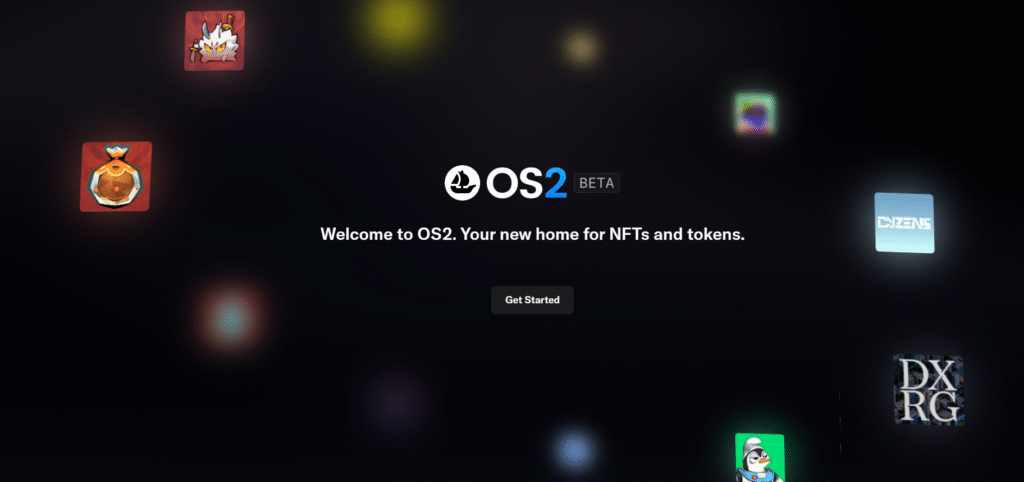
OpenSea is the largest NFT marketplace and a great place to browse top NFT collections like Bored Ape Yacht Club or Pudgy Penguins.
To explore risk-free, connect a testnet wallet (e.g., via MetaMask) and use OpenSea’s testnets to simulate minting or buying without spending real ETH.
👉 Best for: Beginners who want a familiar interface and want to try interacting with test NFTs before the real thing.
Rarible
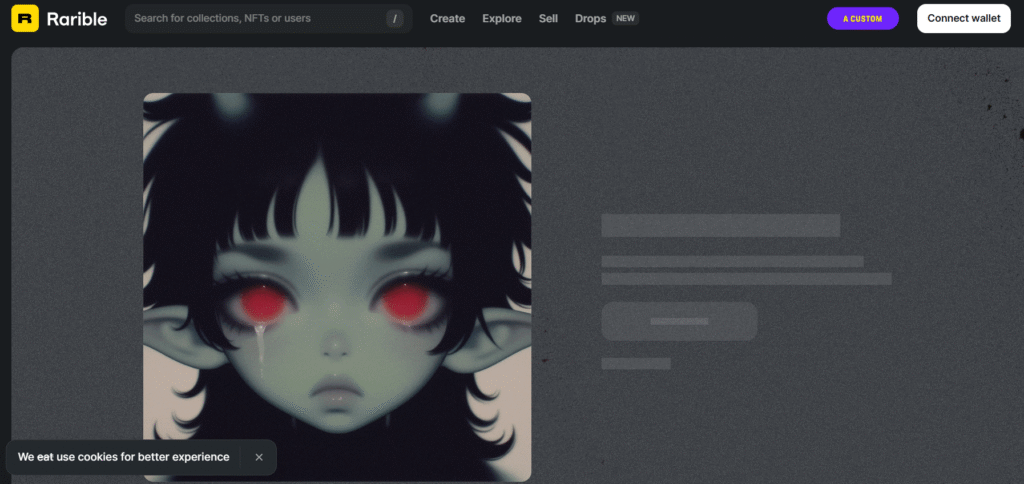
Rarible offers a more community-driven experience with multi-chain support (Ethereum, Tezos, Polygon). You can mint your own NFT from scratch without coding. The “lazy minting” feature lets you create NFTs without paying gas fees upfront.
👉 Best for: Creators who want to test minting art, music, or photography NFTs.
Zora
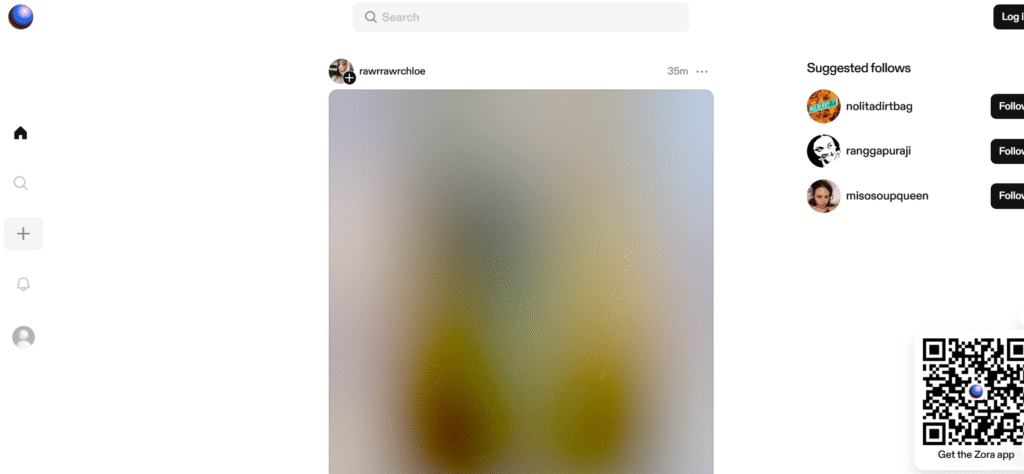
Zora is a creator-first platform where you can mint NFTs for free (on L2 networks like Zora Network or Optimism). It’s gaining popularity among independent artists and experimental creators.
👉 Best for: Artists and web3-native users looking for an alternative to big platforms.
Thirdweb

Thirdweb lets you launch smart contracts and mint NFTs without deep technical knowledge. It even has a testnet playground and deployable templates for marketplaces or NFT drops.
👉 Best for: Developers, marketers, or creators testing custom NFT projects.
Rainbow Wallet
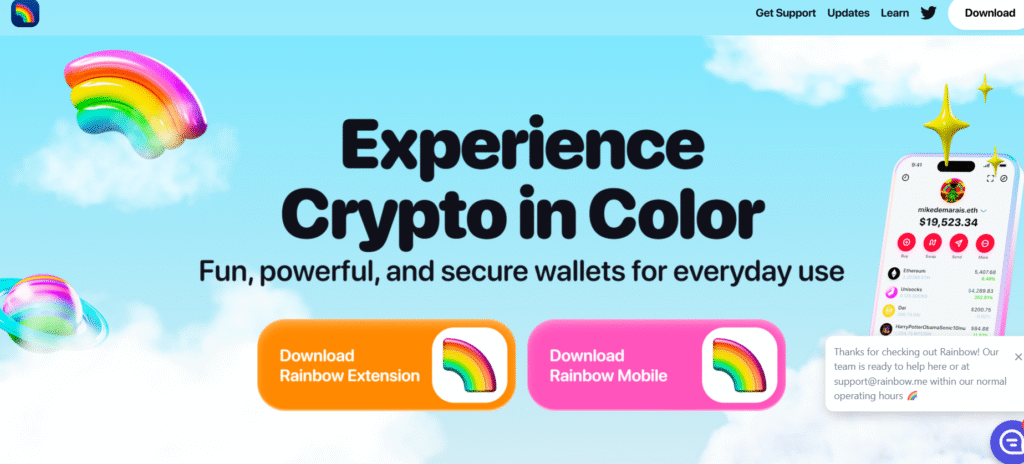
While not a marketplace, Rainbow is a wallet that lets you explore NFTs visually and even browse NFT galleries directly within the app. It has a smooth interface and allows users to discover collections easily.
👉 Best for: Visual learners and mobile users just exploring.
Pro Tip: Set up a wallet like MetaMask and switch it to a testnet. Use a faucet to get some free test ETH and start experimenting risk-free. Then jump into OpenSea’s testnet platform to mint, transfer, or burn NFTs — and truly understand the process.
NFT Vocabulary: Key Terms You Need to Know
Navigating the world of NFTs and Web3 means encountering a lot of new terms. Here’s a beginner-friendly glossary of common NFT and crypto-related concepts. Bookmark this section and return to it whenever you feel stuck.
NFT Basics
- NFT (Non-Fungible Token): A unique digital asset stored on a blockchain. Think of it like a digital collectible that can’t be copied.
- Minting: The process of creating a new NFT and recording it on the blockchain.
- Metadata: The data attached to an NFT — includes name, description, image, attributes, etc.
Wallets & Transactions
- Wallet: A software or hardware tool that lets you store and interact with crypto and NFTs (e.g., MetaMask, Rainbow).
- Gas Fees: Fees paid to process transactions on a blockchain, especially Ethereum.
- Testnet: A blockchain network used for testing without using real money.
Marketplaces & Trading
- Floor Price: The lowest price of an NFT in a collection on a marketplace.
- Royalties: Payments made to creators each time an NFT is resold.
- Collection: A group of NFTs under one theme, creator, or smart contract.
Blockchain & Contracts
- Smart Contract: A piece of blockchain-based code that executes actions automatically (e.g., minting, selling, royalty payments).
- ERC-721: The standard for NFTs on Ethereum. Each token is unique.
- ERC-1155: A multi-token standard allowing for both NFTs and fungible tokens.
Community & Culture
- PFP (Profile Picture NFTs): NFTs designed to be used as avatars on social media (e.g., CryptoPunks).
- Rug Pull: A scam where developers abandon a project after taking investor funds.
- GM/GN: Common greetings in NFT communities — “Good Morning” and “Good Night.”
Analytics & Tools
- Rarity Tools: Sites that rank NFTs by how rare their traits are.
- On-chain Data: Information directly stored and verified on the blockchain.
- Mint Tracker: A tool that shows which NFTs are being minted in real-time.
Final Tips & What to Do Next
NFTs are evolving fast. Start slow, focus on education, and avoid speculative FOMO. Try buying a low-cost NFT or exploring a niche community, and don’t forget to explore our list of top crypto tools for more info.

